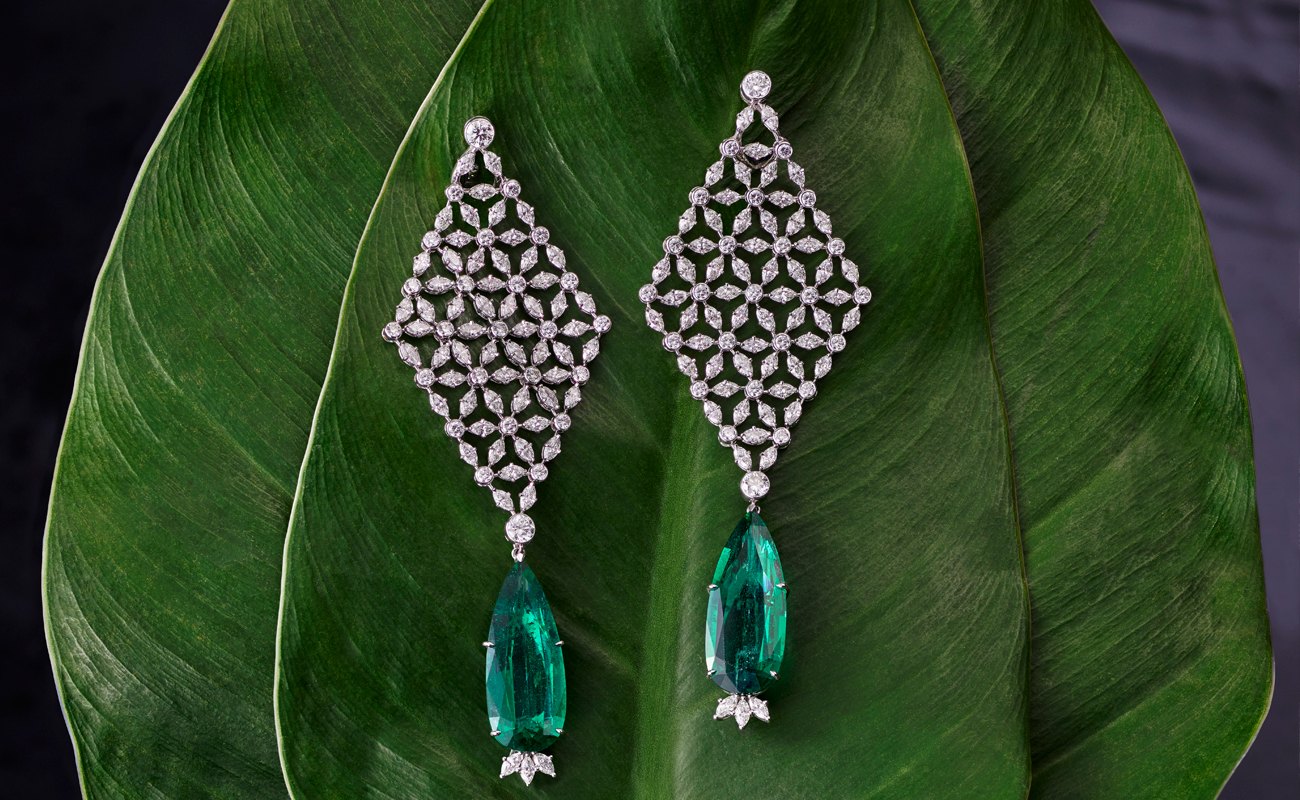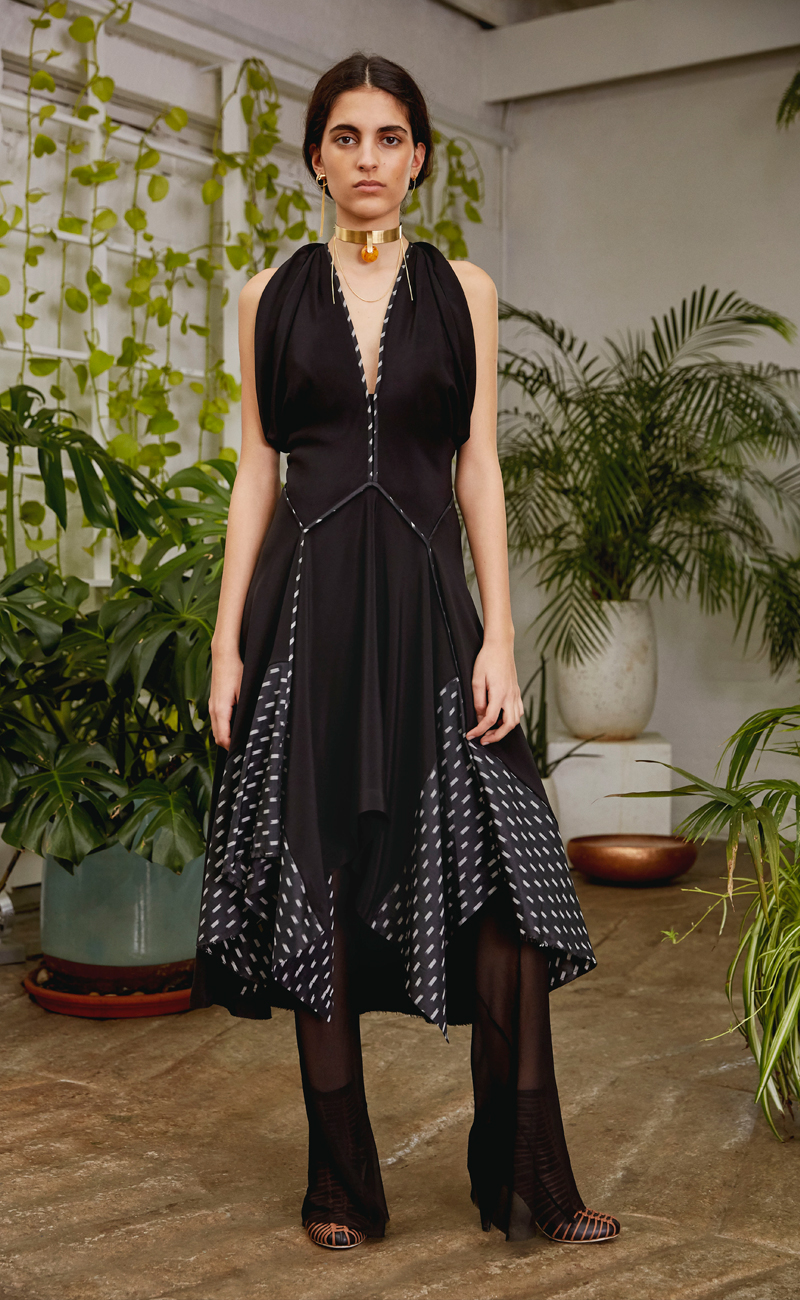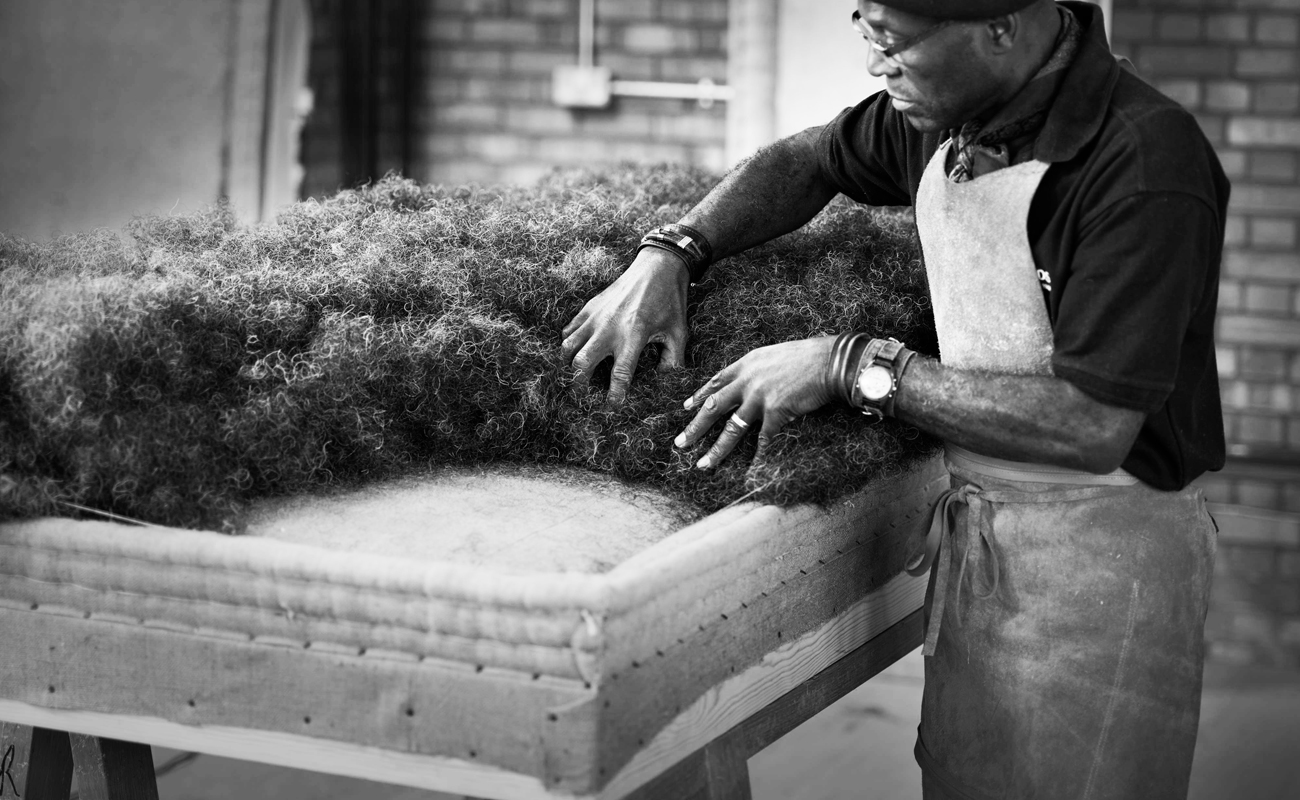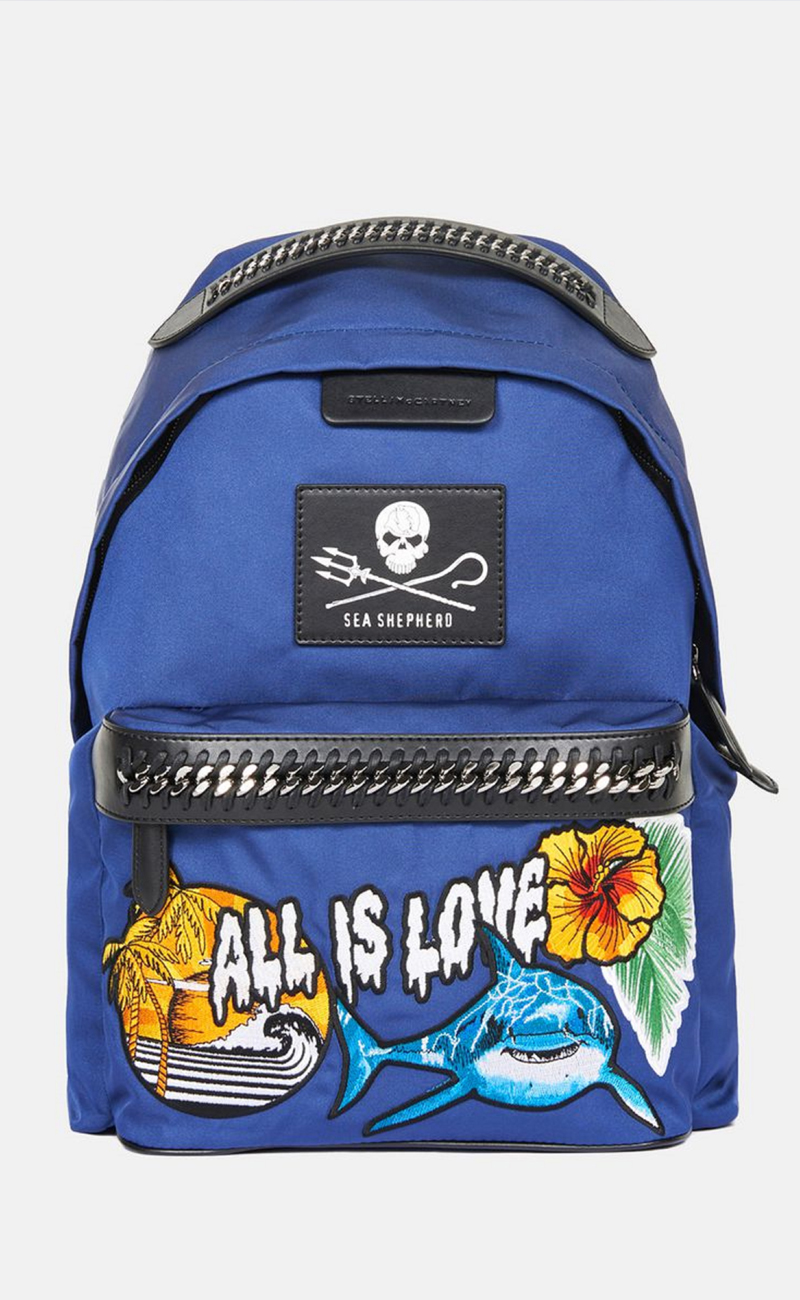This website uses cookies so that we can provide you with the best user experience possible. Cookie information is stored in your browser and performs functions such as recognising you when you return to our website and helping our team to understand which sections of the website you find most interesting and useful.
Green is the new black: how sustainable design and luxury goods came together
By Scott Manson | 25 July 2018 | Culture, Style
The booming fashion industry is making a pledge to be kinder to our planet. Tempus discovers the luxury brands making a difference.

There was a time when luxury and ecological concerns were uneasy bedfellows. How to square the conspicuous consumption and excess of high-end goods with the perceived hairshirt nature of social and environmental issues was one that, frankly, most brands avoided. Sure, some paid lip service to it, with a bag from a collection, for example, crafted from recycled fibres or a carbon offset programme showcased front and centre on their website. But these were the exception, rather than the rule. Fast forward to today and things couldn’t be more different. Top luxe brands are more environmentally conscious than ever before and many have adopted business strategies to reassure and woo ethically minded consumers.
For an industry often connected with notions of excessive consumerism, disposable income, and waste, a new generation of – mostly millennial – customers are demanding more of their favourite brands. Rising concerns about climate change and environmental sustainability – with consumers embracing the benefits of living a greener life, not simply to help the planet, but for their own happiness – means that today’s luxury brands have to talk the talk.
What’s particularly interesting is that while mass production is probably the cheapest and simplest it’s ever been, more and more people are choosing to step away from fast fashion and brands with questionable sourcing and employment practices, in favour of those who are transparent and taking a stand. The younger affluent generations, in particular, expect luxury brands to be aligned with their values.
Indeed, a study from Nielsen showed that 73% of millennial respondents were willing to spend more on a product if it came from a sustainable or socially conscious brand. Moreover, 81% of millennials expect the brands that they buy into to be transparent in their marketing and actively talk about their sustainability impact. And it’s a trend that’s spreading globally. Green luxury is catching on fast in China, for example. According to market research firm Mintel, Chinese consumers are more likely to purchase ethical brands at a premium price.
Related: Chopard commits to 100% ethical gold pledge with Julianne Moore and Colin Firth

58% of surveyed consumers indicated that they are willing to pay more for ethical brands. International luxury group Kering, which owns brands such as Gucci and Yves Saint Laurent, is leading the eco-charge in China. It recently launched a WeChat mini-program named "My EP&L" (Environmental Profit & Loss), an environmental impact measurement tool that tells consumers about the environmental cost of their purchases, and allows them to make ethical choices based on the calculated cost. The lower the cost, the greener the luxury.
It’s easier than ever to determine the provenance of what you buy, luxury brands need to show consumers that they’re making the effort to be more sustainable. Like any movement, though, there are some brands who are leading the way. Take Stella McCartney, for example. The British fashion designer is known for her commitment to ethical fashion, and in June 2017, she once again partnered with Parley for the Oceans, a network where creative industries come together to raise awareness about marine pollution. Stella McCartney and Adidas had previously collaborated with Parley to create the Ultra Boost trainer, made from ocean plastic.
This time, Stella McCartney released the limited-edition Parley Falabella GO backpack, created using recycled polyester fabric made from reclaimed ocean plastic. The style of the backpack with its ocean-themed patches was clearly targeted at a millennial audience – a generation for whom social, economic and environmental impact is a key part of the buying decision making process.
Also in the UK, top London fashion boutique Browns teamed up with designer Conner Ives to create a range of patchwork cotton dresses made from recycled fabrics, to show that old garments can be repurposed for wear in a striking style. The fact that Ives is just 21 years old is perhaps an indication of the eco-mindset that we’ll see emerging from our new crop of fashion designers. Designers from all disciplines are now looking beyond the traditional and obvious to ask: “How can I make a difference?’ In 2014, for example, Tengri was founded by Nancy Johnston, a former health and social care worker who was inspired to start a social enterprise while travelling with friends and staying with Mongolian herder families.

After she returned to London, she started a social business with the Mongolian herders specialising in clothing, accessories and home interiors made from Khangai Noble Yarns and Fibres. It purchases yak fibres directly from co-operatives that now represent and benefit more than 4,500 nomadic herder families. This precious wool can be sourced only by hand-combing each yak individually, once a year, when the yak shed their winter coats. To explain, Mongolian yak live at high altitudes and endure harsh winter conditions. This means they produce a robust and unique wool, which is as soft as cashmere, warmer than merino wool, odour-resistant, breathable and less prone to pilling and fluffing than other fibres. Yak wool knits well, like cashmere or lambs wool, but it is surprisingly stronger, and just as soft.
Tengri now works with heritage mills and bespoke tailors such as Huntsman Savile Row in Britain, making Mongolian yarns one of the most prestigious fabrics in the world. Elsewhere, brands are helping to train the next generation of designers who have a ‘green-first’ mind-set. Global luxury group Kering and the London College of Fashion, UAL, are launching the world’s first open-access digital course in luxury fashion and sustainability. The aim of the course is to educate aspiring designers about adopting eco-friendly practices in the fashion realm.
It’s a natural progression, as Kering was recently named the most sustainable corporation in the textile, apparel and luxury sector according to an index published at the World Economic Forum in Davos, Switzerland. But what’s most encouraging about this new initiative is that Kering is giving new designers all the tools and knowledge they need to make an impact in eco-fashion from the moment they first start dreaming up designs.
Shoemakers are also part of the movement, with companies like Nak showing that there is no need to kill animals to wear beautiful shoes. A champion of conscious fashion, NAK developed its shoe range using vegan materials which mimic the quality of animal leather, but without harming animals in the process. NAK Founders have said much of the brand’s success is down to expert craftsman in Italy who have transformed their materials into luxury footwear that feels as good as it looks.

From Chelsea boots to serious stilettos, the fashion style is intrinsically British, but with the expert craftsmanship that comes from using Italian artisans. For designer Kit Willow, it was the fashion artisans of India who she turned to in order to create the stunning pieces for her ethical, sustainable Kitx collection, which was recently worn by actress Emma Watson on the red carpet, the brand holds the simple mantra of wanting to make women feel good, without harming our planet.
And what of jewellery? Once an industry shrouded in secrecy but now, thanks to better consumer knowledge of the issues surrounding ‘conflict diamonds’, it’s entered a new era of transparency. Leading jewellery house Chopard is taking things one stage further. In an industry first, Chopard pledged to use 100% ethical gold in its jewellery and watch creations going forward. From July 2018, the luxury Swiss jeweller stopped using any gold that is not "acquired from sustainable sources and verified as having met international best practice environmental and social standards."
As a family run business, sustainability has always been a core value at Chopard. The brand regularly produced a Green Carpet Collection – in partnership with Livia Firth's Eco Age – which featured pieces that were sourced, designed and crafted according to the highest ethical standards. Now, 30 years after first beginning its sustainability journey, Chopard is able to apply this across its entire range – a process which has taken five years to finalise. It’s encouraging to see such big brands taking a stand on green issues. Previously the concern of smaller operations, companies like Chopard are showing that they can tackle consumer concerns head on – and create beautiful luxury products in the process.
Read more exciting features in the latest issue of Tempus, out now







